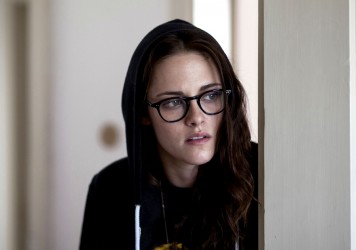The anguished face of Juliette Binoche is the emotional core of this harrowing study of an artist.
Though there are many sad or disturbing moments in Frederick Wiseman’s 1967 documentary, Titicut Follies, one that epitomises its central argument is the man who looks directly into the camera and insists that he’s not insane, though being institutionalised is making him ill. This sentiment is echoed several times by the titular Camille Claudel (Juliette Binoche), the former student and lover of sculpture Auguste Rodin, who experienced a bout of paranoid schizophrenia at age 48 and was sectioned by her brother Paul (Jean-Luc Vincent).
Despite many campaigns by friends and the advice of doctors that treated her, Paul refused to let her be released for the rest of her life. Assembled from their letters to other people and to each other (much of the dialogue is verbatim), Dumont’s consideration of her cruel fate is largely achieved through long takes and many close-ups of Binoche’s masterful face.
In one scene, while observing two patients (one of whom can barely enunciate) rehearsing a play about Don Juan, Binoche effortlessly transitions from laughing at the absurdity of the exercise to sobbing at the absurdity. Never didactic, the frequent silences allow the audience to run through Camille’s thoughts and feelings with great care – or, just as likely, fidget uncomfortably and hope the film ends soon.
Though Binoche’s performance is inextricable from the experience and meaning of director Bruno Dumont’s Camille Claudel 1915, it also explores a series of contrasts: the sane and insane, actors and non-professionals, moans and speech, nature and confinement, the punishing and redeeming aspects of faith. On a larger scale, faith and Camille’s suffering is also contrasted with modernity at large: though she was institutionalised for the last 30 years of her life,Dumont chooses to dramatise three days in the middle of the Great War, while she was relocated from a Parisian hospital to the Montdevergues Asylum outside of Avignon.
As opposed to the mechanised horror going on not that far away and forever changed politics, warfare, everyday life, and art, the asylum in the film looks like a medieval cathedral and is quiet as a crypt. Camille and her kind exist in a primitive, Spartan stasis outside of that shocking new reality, “treated” with methods that are the antithesis of the progressive or secular – many are not allowed to walk without holding a nun’s hand.
And, as the film argues, the reasons for her confinement are just as antediluvian: Paul’s religious passion is what makes him feel Camille should remain locked up, as explored in a lengthy monologue with a priest prior to visiting her. After Paul climbs into his Model-T and drives off, the priest is shown in a close-up beaming ghoulishly, which somehow comes off as more disgustingly moralistic than the previous speechifying.
Dumont’s commitment to tone and aesthetics is remorseless – this was an injustice, and you will suffer accordingly for 94 minutes. But it’s not just suffering for suffering’s sake. In our present Huxleyan existence of digital devices, it’s just as easy to block out or avoid such a gruelling experience entirely, but it’s worth looking into the abyss that was one woman’s life.
Published 19 Jun 2014
Curious to see Dumont and Binoche together.
Binoche is stunning, but this is about as far from enjoyable as you can get.
Will stay with you for a long time – despite your sanity.

It’s slapstick cannibal class war on the seaside from one of Europe’s most unique and consistently surprising directors.

By Adam Nayman
Kristen Stewart achieves the impressive feat of outshining Juliette Binoche in this rich drama from Olivier Assayas.